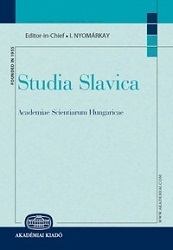Культурная память и структура локального пространства в селах Чуново, Яровце и Русовце (Южная Словакия)
Cultural Memory and the Structure of Local Space in the Villages of Chunovo, Jarovce, and Rusovce (Southern Slovakia)
Author(s): Darja Jurʹevna VashchenkoSubject(s): Cultural history, Customs / Folklore, Ethnohistory, Local History / Microhistory, Culture and social structure , Sociology of Culture
Published by: Akadémiai Kiadó
Keywords: mental map; local space; cultural memory; narratives; conceptualization; sociocultural situation; desacralization; folk spiritual culture;
Summary/Abstract: The paper describes the structure of the local space of the Croatian villages of Chunovo and Jarovce, and the Slovak (earlier predominantly Hungarian–German) village Rusovce (Southern Slovakia, the region of Bratislava) in the form in which it conceptualities in the minds of local residents. The material was oral records on the results of the field survey of villages in May 2018. It is noted that the specificity of the structuring of local space in the villages was influenced by their complex geographical and sociohistorical peculiarities since the villages are located within the capital of Slovakia and at the same time they became part of the state only after 1947. It is shown that each of the three villages is characterized by orientation to a certain type of space which is significantly transformed with the passage of time. Thus, in Chunovo, which is located closer to the Hungarian border, the mythological and sacred space is supported. The natural space in the village is closely intertwined with the mythological, and the domestic is subordinated to the sacred, while the historical space does not play any significant role. Rusovce, located five kilometres towards the capital, is a completely different type of spatial organization, a significant imprint on Rusovce was imposed by the deportation of indigenous people after the Second World War. The disintegration of the ethno-cultural tradition is perceived by the remaining indigenous people as a traumatic experience. Sacred space in Rusovce is the subject of the opposition “real (old)” and “fake (modern)”. Domestic space is characterized by the deprivation of former buildings from their household functions, while they are turning into symbols of the past. The transformation of the village takes place not on the principle of expanding its borders but on the principle of concentration, filling the old coordinates with new objects. Natural space bears traces of human intervention and is associated with the consequences of the territory’s accession. In the structuring of the mental map of the old residents of Rusovce, the opposition “real” and “false” plays a significant role. The false, artificial, is associated with modernity, and the signs of the present remain within the village but either lose their direct function or are “lost” as a result of the concentration of the village space by objects which are similar in form and but foreign in origin. The village of Jarovce, which is the closest to Bratislava, is dominated by a focus on specific historical events and on the functional relevance of the locus. The sacred space in the village is subordinated to the historical, and the domestic, in turn, is subordinated to the sacred, the dominants of which structure the village and at the same time are clearly associated with specific events in the relatively distant past. Mythological space in Jarovce is almost not structured but natural topos serves for orientation about weather events or specific localities.
Journal: Studia Slavica Academiae Scientiarum Hungaricae
- Issue Year: 64/2019
- Issue No: 1
- Page Range: 197-205
- Page Count: 9
- Language: Russian
- Content File-PDF

